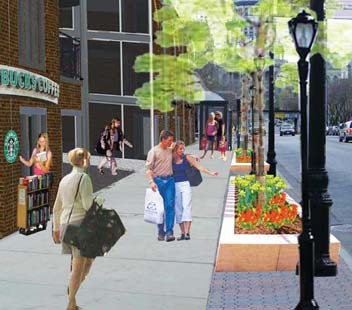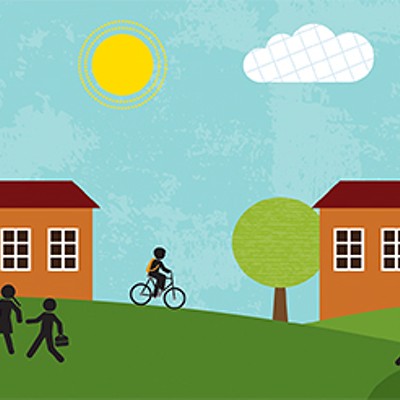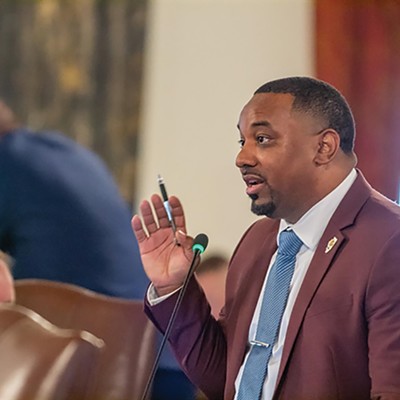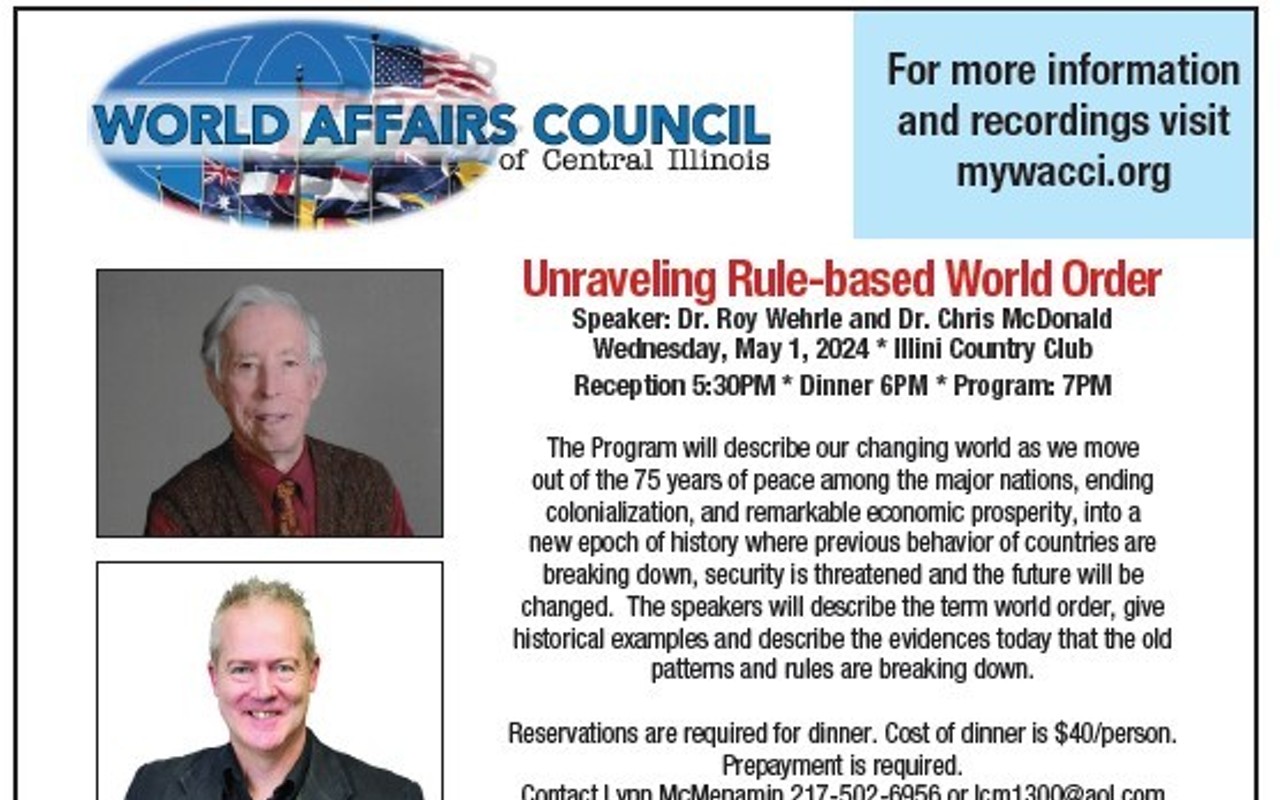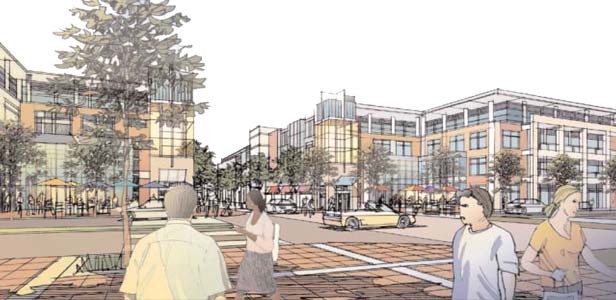
Springfield is bursting with new urbanists. While the phrase “new urbanism,” coined in the 1980s, often frightens people who think that new urbanism entails
mandating an organic arugula garden on every rooftop or forcing folks to trade
in their cars for a pair of Crocs, the concept is much more simple than that.
New urbanism is a planning principle whose goal is to recapture a sense of neighborhood, the feeling that existed in communities before people swapped their front porches in the city’s core for oversized garage doors on its outermost edges.
New urbanists — the most vocal of whom include the national advocacy group Congress for New
Urbanism, or CNU (see page 13) — call for restoring urban centers through filling in vacant lots and buildings
and by reconfiguring suburbs to offer neighborhoods that offer a range of
housing options, are close to jobs and, most importantly, are walkable.
Central Springfield is primed for new urbanist growth, notes architect and CNU-Illinois chairman John Peter Barie.
“If you go to areas outside the downtown core, you’ve got block after block that are undeveloped, empty, underdeveloped, underutilized, abandoned buildings,” says Barie, an architect from Aurora who toured Springfield’s architecture last summer.
It’s not from a lack of effort or imagination, that’s for sure. Over the past several years, when given an opportunity to map a
vision for Springfield’s future, capital city residents have offered up a multitude of ideas that
incorporate new urbanist principles of walkable neighborhoods and mixed-use
developments.
Urbanism was particularly prevalent in the recommendations of the Regional/Urban Design Team charged in 2002 with developing a plan to spark development downtown.
In addition to proposing “more residential uses, enhanced retail opportunities, improved cultural venues
and reuse of many existing buildings,” the R/UDAT called for the construction of new parking garages, not solely to
accommodate more cars, but “to allow a greening of the Capitol Complex.”
Following R/UDAT, in 2007 architecture students from the University of Illinois Urbana-Champaign, under the supervision of professor Robert I. Selby, dreamt up a number of developments for downtown for the American Institute of Architects 150 Springfield project.
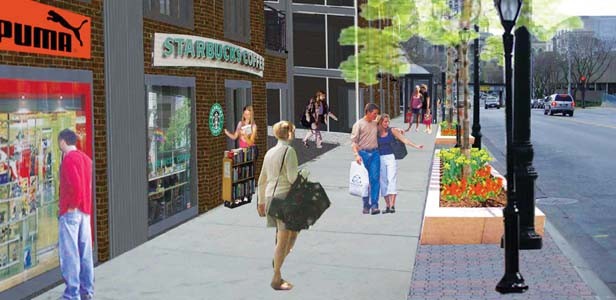
The document the students produced, Blueprint for Springfield: Designing the Future of Historic Downtown of Illinois’ Capital City, focused on “principles for livable communities.” Among these principles were promoting a downtown neighborhood that allows residents to walk to shops, jobs and cultural and entertainment venues, encouraging mixed-use development, providing a variety of residential offerings, varying transportation options, and protecting environmental resources” — all hallmarks of new urbanism.
Still, downtown still seems to be a long way from having the cineplex and swanky nightclubs the students sketched out.
Paul O’Shea, the city’s planning and design coordinator, also chairs the R/UDAT follow-up committee and worked closely with Selby’s students on the AIA 150 project.
“The younger generation does not want a great job in a crummy city. We need to be a destination city for this younger generation,” says O’Shea, who maintains that progress has been made along those lines.
Efforts by such groups as Downtown Springfield, Inc. and Springfield in Bloom have helped land the city on a number of prestigious “tops” lists of greenest, smartest and coolest cities in the U.S. Those honors help boost tourism.
“That’s no small item,” O’Shea says. When the natives complain about things being done for tourists, O’Shea says it should be noted that visitors provide valuable word-of-mouth. They
go home and tell people how cool downtown Springfield is. “When they consider moving, they remember us.”
With that foundation in place, the next step is to entice firms to develop more residential units in favor of more lucrative downtown office space. O’Shea insists that there is fervent demand for downtown living, and that would “ignite” more services geared toward downtown neighbors.
Norm Sims, executive director of the Springfield-Sangamon County Regional Planning Commission, sees it as a classic chicken-and-egg dilemma.
“In order to attract amenities to downtown Springfield, more people will have to
move downtown, but nobody’s going to move there unless more amenities are offered,” he says.
Obstacles to new urban development — downtown or elsewhere in Springfield — are manifold.
Despite new urbanism having existed as an urban design movement for more than two decades, the types of pedestrian-friendly neighborhoods new urbanists envision — with businesses and residential dwellings compacted in a small area — are still considered experiments in most places.
Banks, therefore, which are set up for either home loans or business loans, haven’t figured out how to structure mixed-use loans. In addition, zoning regulations, which over time have come to favor sprawling suburbs over development of the inner-city, make it less of a headache to convert a cornfield into a big-box chain retailer than to tackle urban infill projects.
“Developers don’t want to build something people don’t want to buy. And lenders don’t want to loan money for something people aren’t going to want to live in,” Sims says.
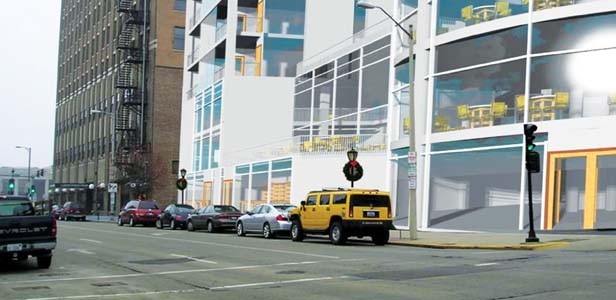
Nevertheless, he adds, “I’m convinced that if we can get one built, people will like it. We tend to be
bullish about these things, but of course, it’s not my money.”
Yet new urbanists see hope. The tastes of baby boomers and empty nesters, who
are increasingly giving up their larger homes for smaller digs that offer more
amenities, are converging with those of their children and grandchildren, who
prefer the kind of lifestyle that new urbanist communities make possible.
Springfield planners point to the Mid-Illinois Medical District as the perfect
illustration of this. According to the district’s master plan, completed in 2005, students and medical professionals can not
only rent an apartment in the same building that houses the coffee shop where
they cram for exams, but also be footsteps away from their instructors, who are
also living in one of the district’s neighborhoods, like historic Enos Park.
Besides, people just like neighborhoods designed around new urbanist principles
better than living in the burbs and having to drive everywhere, says Douglas
Farr, an architect and urban planner in Chicago.
“If you show people a picture of, or take them to see a traditional walkable
neighborhood with a cute little main street — oh, people just love that,” he says.
Perhaps too much. John Peter Barie, the CNU-Illinois chairman, explains: “What we’ve found is that when you offer these kinds of developments, they’re instantly popular. As developers build these communities, they sell very
well, quickly. People want that alternative so one of the problems is that all
the new urbanist communities are very expensive. Well that’s the law of supply and demand.”
Gentrification has yet to visit Springfield’s older neighborhoods. Yet critics charge that new urbanist dwellings in major cities are out of reach for many low- and middle-income folks, further perpetuating the very race and class divisions the Congress for New Urbanism purports to oppose.
Barie offers that “people of lesser means,” who now suffer due to disproportionately high transportation costs of owning a
car or being subjected to long bus and train commutes, would benefit by taking
advantage of a live-work arrangement in which a person could operate a
storefront business such as a barber shop or nail salon and live in an upstairs
apartment.
Architect Jim Johnston, founder and president of Sustainable Springfield, says despite the grumbling of “doomsdayers and naysayers,” new urbanism has gone mainstream.
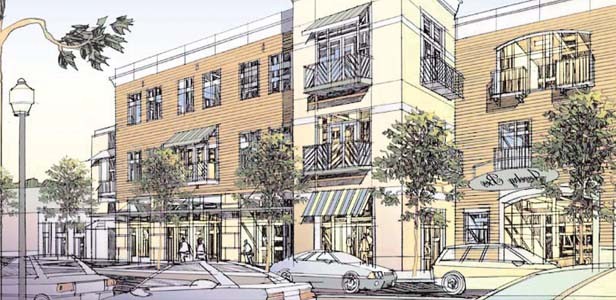
“Till Al Gore came out with An Inconvenient Truth, we didn’t take these issues seriously. Now going green is the thing to do,” he says.
One of the mantras of the new urbanist movement, Johnston says, is that, “No kid should have to ride their bike more than 10 blocks to buy a popsicle.”
As the economy improves, as real estate development resumes, as the price of oil creeps upward, Johnston believes sprawl will be a passing phenomenon.
“Economics will be the driver. But sooner or later, we’re going to have to get back to basics.”
Contact R.L. Nave at [email protected]

